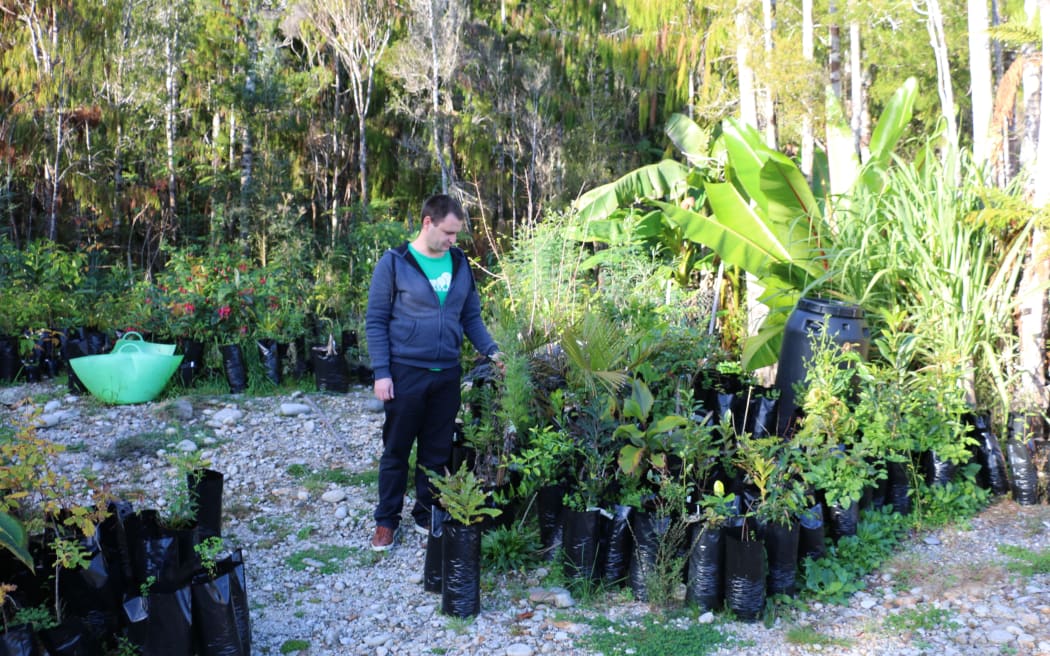
Photo: Cosmo Kentish-Barnes
In the dramatic limestone country of Buller, dramatic fruits are turning heads.
Jon Colyer, a self-taught botanist, wants locals to start planting edible perennials. And while they're not commonly found in the region, they are growing in Colyer's nursery and food forest.
"Who knows, there could be a lot more backyard bananas in the Buller."
On his 62-hectare property, about 61 hectares is of relatively mature native bush.
There, he trials more than 300 varieties of new crops, or existing crops planted in slightly different ways.
In Colyer's words, "There's lots of very unusual stuff."
"There's at least 1000 plants at last count and that was quite a while ago, we're probably close to 2000."

Photo: Cosmo Kentish-Barnes
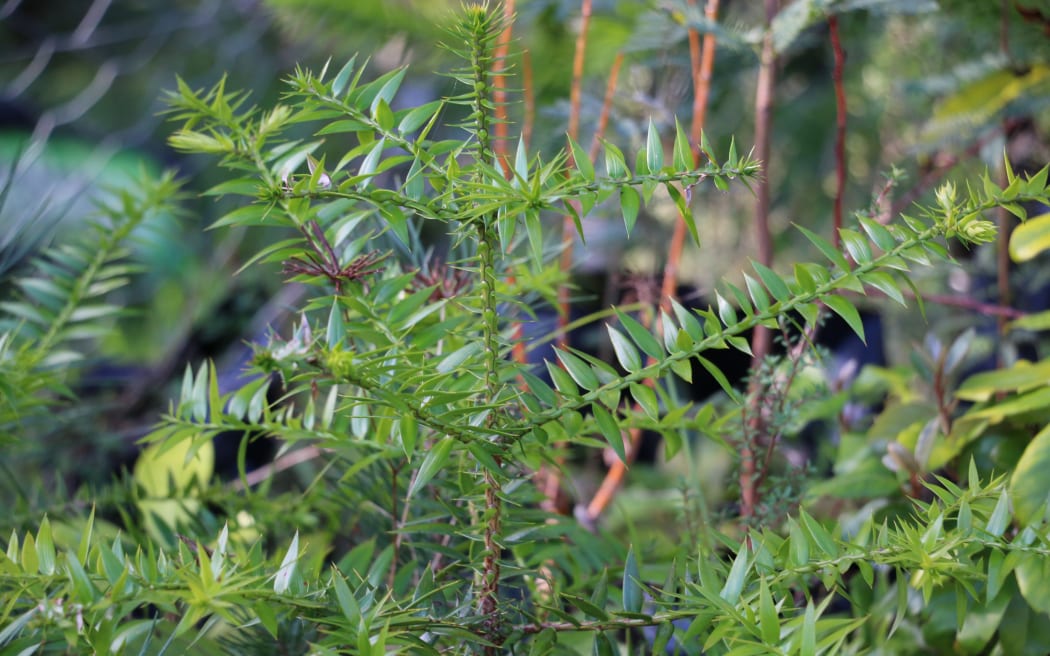
Photo: Cosmo Kentish-Barnes
The software engineer works four days a week for a Wellington company.
He says he would like to scale up the nursery to employ locals which would transform his backyard into a social enterprise - a hybrid between a business and a charity.
He says he would like to change how the region is growing food.
"We're very dependent on going to the supermarket for our food and as we've seen just in the last few years, the feeling of being comfortable at a supermarket can quite quickly change to being a bit more like 'oooh, these prices'.
"That's why we wanted to get people to grow their own food, but in a way in which it's not super high effort. Everything we grow here is perennial.
"That's what we think is a big part of food security is these perennial plants that just grow, and then when you need them, you can use them."
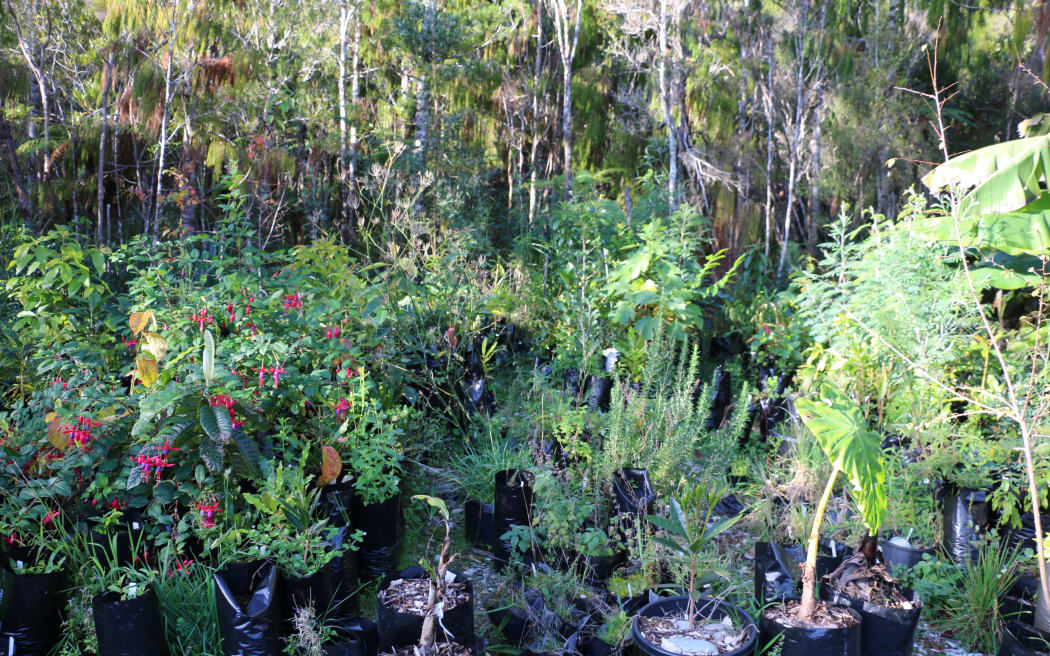
Photo: Cosmo Kentish-Barnes
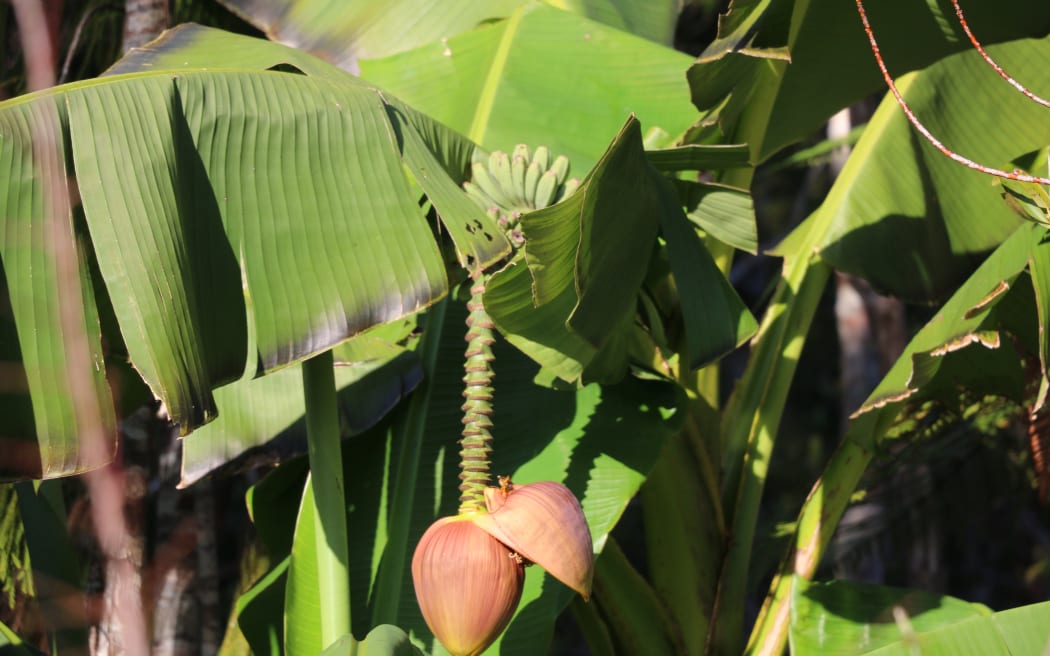
Photo: Cosmo Kentish-Barnes
Colyer's food forest is far from just banana plants.
There are Lucuma, a South American mountain fruit, roughly the same size as an avocado, with a triangle of flavour.
"At the very top of the triangle, you have a maple syrup or a butterscotch flavour. Say to the bottom left of the triangle, you have a sort of kumara sweet potato flavour. And in the bottom right is sort of a dates or raisins flavour."
There is also yangmei, otherwise known as mountain peach.
Colyer says the fruit is roughly strawberry sized and tastes somewhere between a herbal strawberry or raspberry flavour.
The fruit is very rare to find in New Zealand and the only plant Colyer is aware of is in Northland.
"And it's a nitrogen fixer, which means that it supplies its own fertiliser from the air."
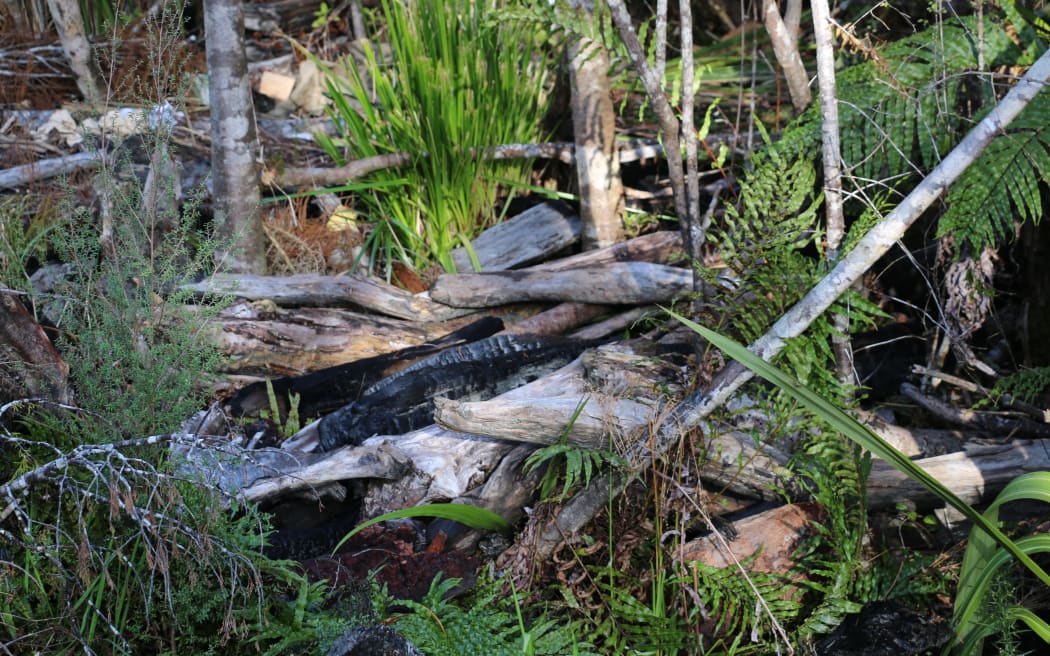
Photo: Cosmo Kentish-Barnes
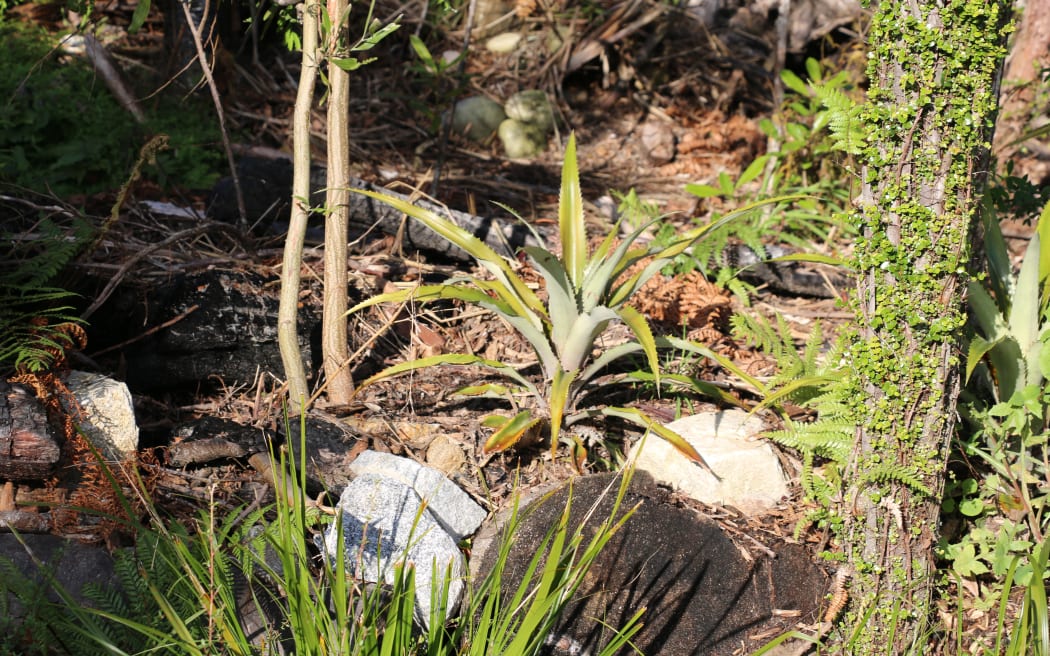
Photo: Cosmo Kentish-Barnes
Colyer says there is an import pathway for about 20,000 seeds, called the basic seed category, on the plant biosecurity index.
As long as the seeds meet three conditions of being clean, labelled and declared on the packet, they cancome into New Zealand, he saays.
However, there may be a long time before Colyer can determine if some of the plants he has imported will fruit successfully in the area.
"The most long term of that would be the Bunya, that's an Australian native plant. But you're looking at 30 plus years to get them to fruit.
"It's very prickly and is well known for eventually producing a rugby ball sized cone. And inside the cone would be strawberry sized nuts that roughly taste halfway between a chestnut and a pine nut."
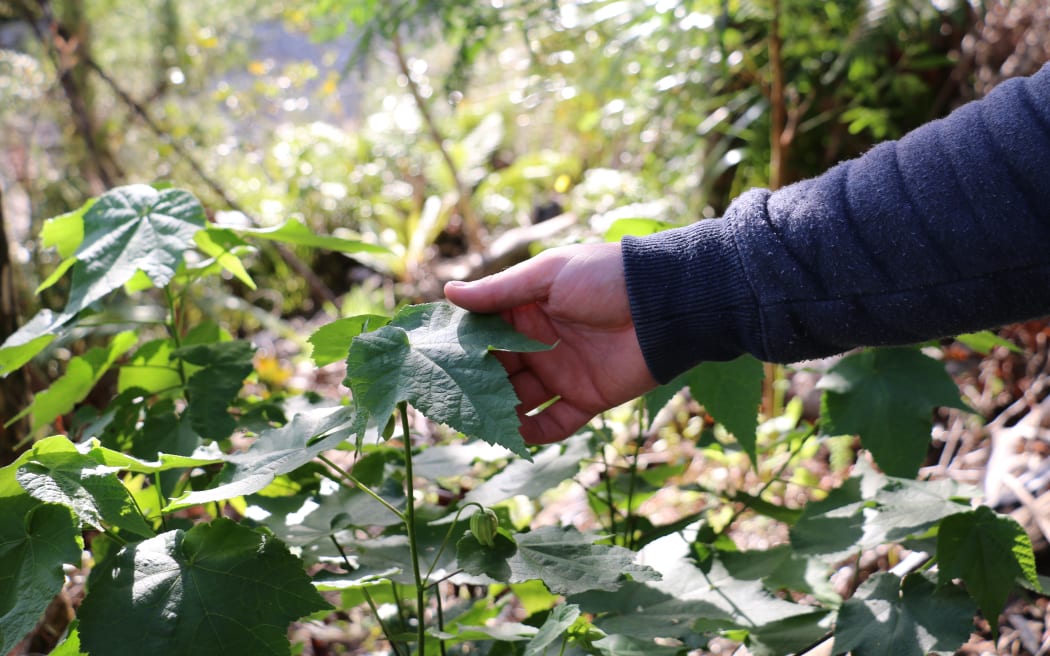
Photo: Cosmo Kentish-Barnes

Photo: Cosmo Kentish-Barnes
Exotic and unsual fruit is not the only thing growing in Colyer's fruit forest - unless you consider bananas to be exotic.
Colyer grows Goldfinger and Misi Luki bananas. He says nobody recommended another banana variety more highly.
"We've been getting them into the community and getting people growing them."
He also grows the pisang awak variety, meaning "normal banana".
"Already they're starting to be a bit of a dent in the local area from bananas that we've supplied.
"Other people are starting to get fruit on their plants and who knows, there could be a lot more backyard bananas in the Buller."
Here is a link to Jon's West Coast Agroforestry website
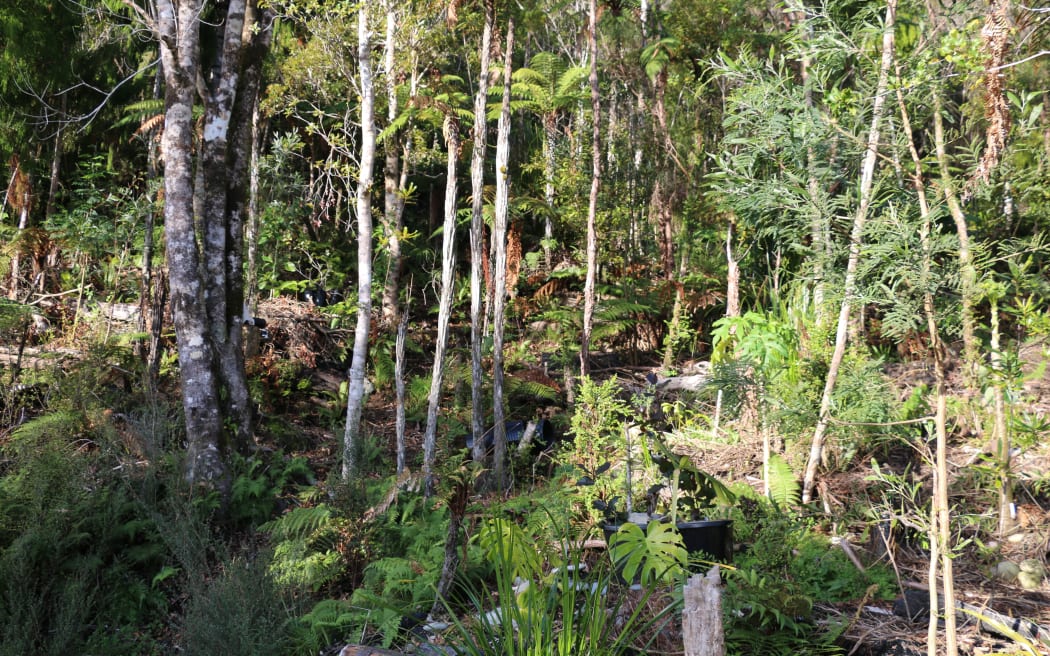
Photo: Cosmo Kentish-Barnes
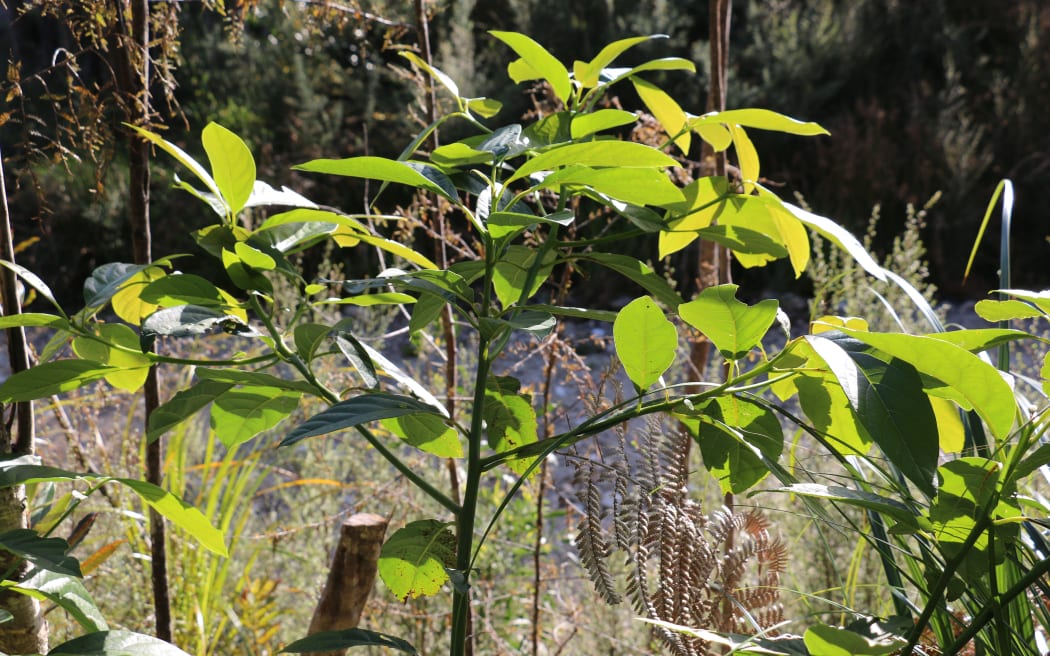
Photo: Cosmo Kentish-Barnes
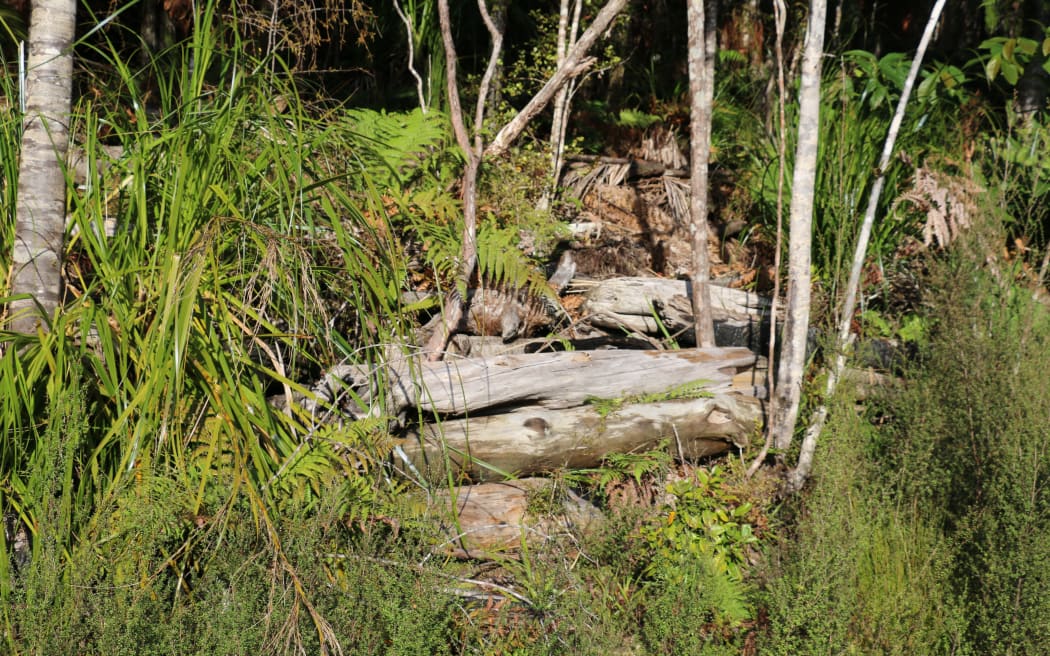
Photo: Cosmo Kentish-Barnes

